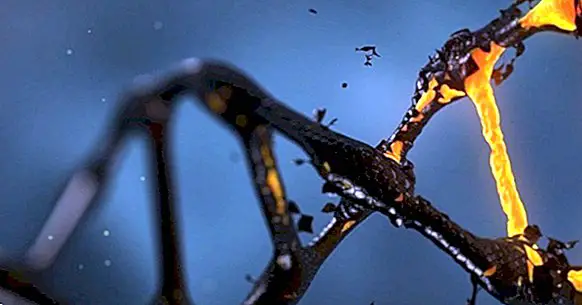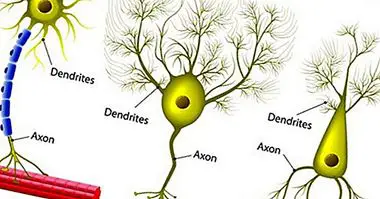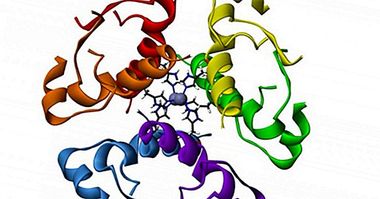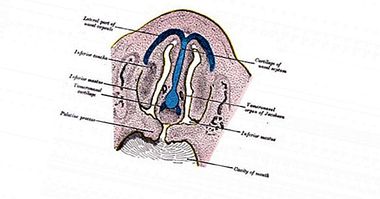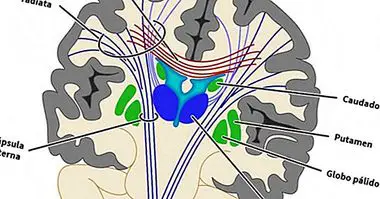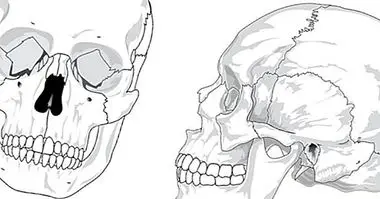Discovered a gene related to brain aging
Aging is an essential process in the cycle of life . In general, aging affects the cells, and more specifically, their genetic content.
Of course, this process does not evolve in a random way; In fact, not only do we age more or less depending on how we feed ourselves and on the general lifestyle we lead, but there are also genes that regulate our physical and psychological maturation. In fact, an important discovery has recently been made in this regard: it has been found a gene related to the way our brain ages , which is interesting for many reasons that we will now see.
- Related article: "The 9 stages of the life of human beings"
DNA and the maturation of our mind
At the ends of the double helix chain that forms our DNA (enclosed in all the cells of our body) there are a series of sequences of nucleic acids that are known as telomeres . Each time a cell divides, these ends are shortened, and when it reaches a certain limit, it causes cell death. The loss of cells is part of aging, which leads to decreased activities of the body.
One of the organs most sensitive to the passage of time is undoubtedly the brain . The loss of neurons takes its toll, and there is a long list of problems that cause this, such as lack of motor coordination or dementia.
In research topics, there has always been a special interest in studying brain aging, such as to reveal its relationship with neurodegenerative diseases such as Parkinson's or Alzheimer's. Not long ago, one of these investigations located a gene that is related to this process.
- Maybe you're interested: "The first 11 symptoms of Alzheimer's disease (and its explanation)"
A gene that affects the frontal lobe
Scientists at the University of Columbia (United States), Asa Abeliovich and Herve Rhinn, examined about 1900 samples of healthy brains. From their observations, they could conclude that a gene, called TMEM106B , has a fundamental role in how human brains age.
Apparently, certain varieties of this gene cause the frontal lobe to age at a faster rate than other people. This is important because this region is involved in executive functions, such as decision-making, managing our focus or planning. The aging of the frontal lobe causes a decrease in these vital functions and increases the risk of the appearance of diseases known as neurodegenerative.
- Related article: "The 15 most frequent neurological disorders"
Genes as risk factors
Finding genes that explain the occurrence of biological anomalies is nothing new. One example is the ApoE gene, responsible for the transcription of the Apolipoprotein E protein, which in one of its variants (specifically ApoE4) is associated with an increased risk of suffering Alzheimer's disease .
The novelty of this discovery is to have found a gene that controls the rhythm of life of a region of the brain. As the discoverers themselves argue, aging is the main risk factor for neurodegenerative diseases and this research can help predict the appearance of these diseases or even intervene on them through the so-called genetic therapies.
How does this gene of brain aging work?
For this study, Asa Abeliovich and Herve Rhinn first obtained the genetic data from 1904 autopsy samples from brains that had not suffered from any neurodegenerative disease. Once obtained, they compared them with average data from brains of the same age, specifically observing 100 genes whose expression increases or decreases with age. The result is that a gene causes differential aging, the one called TMEM106B.
The concept of differential age is simple; it is no more than a difference between the biological age of the organ (in this case the brain), with the chronological age of the organism. The frontal lobe turns out to be older or younger than what corresponds to the person's age, taking as reference their day of birth.
According to its discoverers, the TMEM106B gene begins to manifest its effects from the age of 65, and works to reduce the stress caused by aging over the brain. From what has been seen, there are different alleles, that is, variants of the gene. Some protect against this stress (normal function), while others do not exercise this task, which causes the process of brain aging to accelerate.
Related to a disease
In their study, these researchers also found that a variant of the progranulin gene It has an effect on aging, but not as prominent as the TMEM106B. Although they are two different genes and are found on different chromosomes, both act on the same signaling pathway and are associated with the appearance of a neurodegenerative disease known as frontotemporal dementia .
This clinical syndrome is characterized by a degeneration of the frontal lobe, which can extend to the temporal lobe. In adults between 45 and 65 years of age, it is the second most common form of dementia after early-onset Alzheimer's, affecting 15 out of every 100,000 people. In people over 65, it is the fourth most common type of dementia.
In spite of everything, the study has been done from the perspective of healthy brains, so more studies are needed to confirm certain points with their relationship with diseases. But, as Abeliovich indicated, aging makes them more vulnerable to neurodegenerative diseases and vice versa, diseases cause an accelerated aging.

